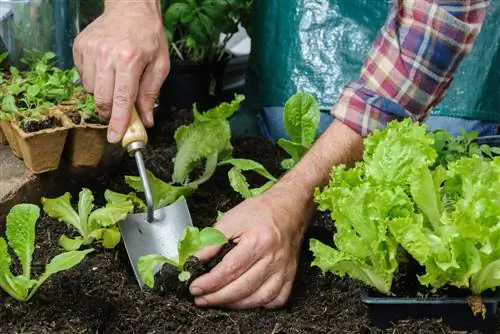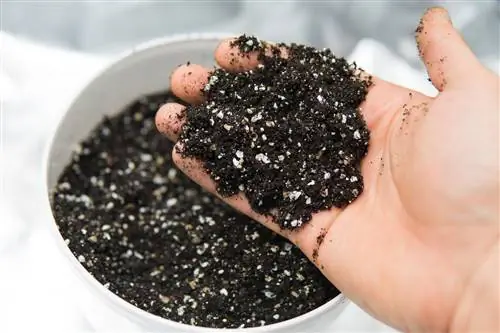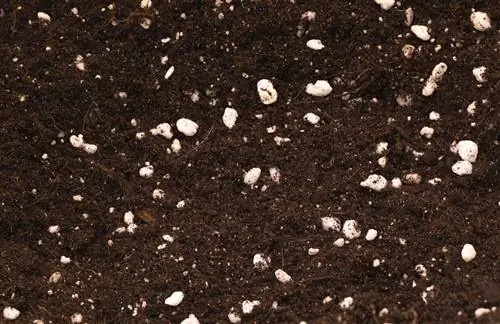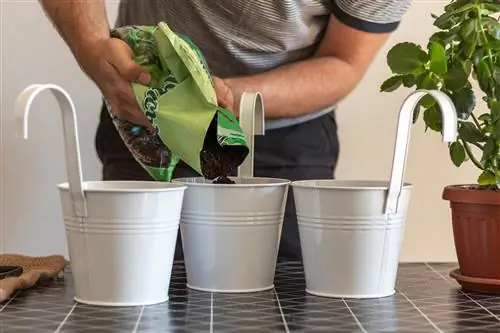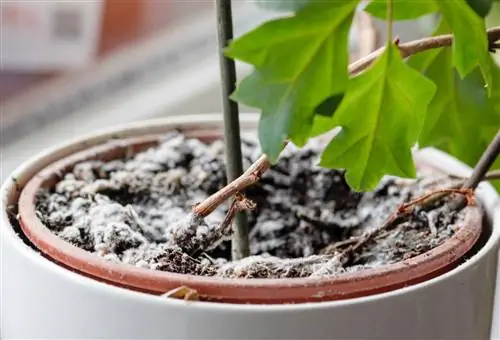- Author admin [email protected].
- Public 2023-12-16 16:46.
- Last modified 2025-01-23 11:22.
Potting soils are artificially mixed and prepared soils. They contain various additives such as storage substances and fertilizers that are tailored to the respective plant species. Find out here what is behind the yellow dots in the potting soil and what they are actually useful for.
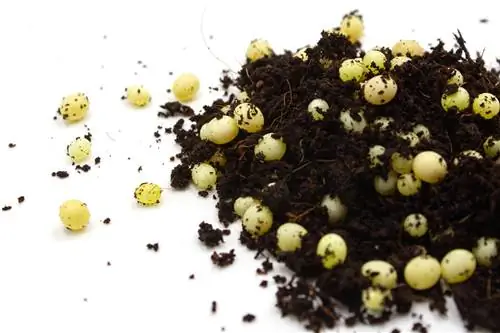
What are those yellow dots in the potting soil?
Yellow dots in the potting soil initially look like eggs of pests such as snails or fungus gnats. However, the small hard balls aredepot fertilizer and support the plant in its growth. This means the plants receive enough nutrients for many months.
What is slow-release fertilizer and what is it used for in potting soil?
Depot fertilizers arenutrient s alts, coated with synthetic resin (coated). The hard shell protects the nutrients from suddenly dissolving in water. If the plant were to receive all the fertilizer in one go, it would cause massive damage. The synthetic resin shell has small pores through which water vapor can penetrate. This means that the nutrients are gradually dissolved and released slowly. This makes long-term fertilization possible over several months to a year. Depending on the type of plant, there are different slow-release fertilizers.
Are the yellow dots in the potting soil mold?
If you are not sure whether the yellow dots are mold, you can tell by the following features:
- Molds are superficially visible on moist substrate of houseplants.
- They usually form whitish, fluffy and soft spots or a connected network.
- The spores are everywhere in the air and settle where it is moist.
- If the soil dries out, the fungus dies.
Depot fertilizer, in contrast, consists of small, solid beads that are evenly distributed throughout the soil.
How do I identify the yellow dots in potting soil as eggs?
Perhaps you have discovered the small beads in your balcony or terrace pots and are not sure whether they could be snail eggs or something similar. You can recognize snail eggs by the following features:
- When touched, the eggs are sticky, slimy and soft.
- They do not have a hard shell and are easy to crush with your fingers.
- Snail eggs are not distributed throughout the substrate, but are clustered in several places in a clutch.
If you discover snail eggs in your flower pot, you should act immediately.
Tip
This is what you should do if the yellow dots are snail eggs in the potting soil
Snail eggs should be destroyed so that the animals do not eat parts of the plants and thereby cause harm. In the worst case, the plant can die. Remove the plant from the potting soil. Dry the affected soil over a wide area in the sun and then compost it. Check the root ball for additional eggs. Place the freed plant in fresh potting soil and water.


